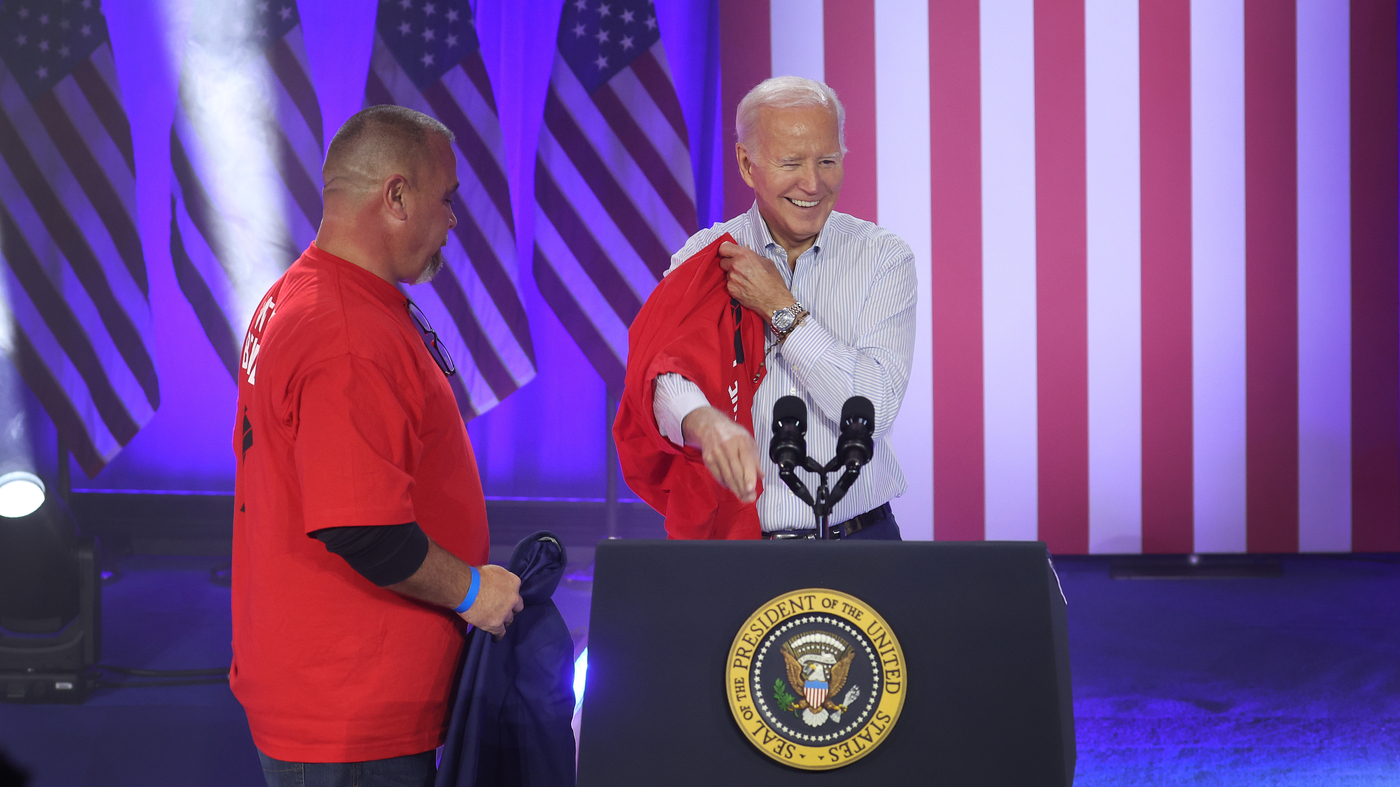
Biden hopes to buy time for electric vehicles with new restrictions on China
The Biden Administration Announced a Near-Unprecedented 100 percent Tax on Electric Vehicles: Implications for the American Economy and Climate
Today, the Biden administration announced a near-unprecedented 100 percent tariff on Chinese-made electric vehicles, a move the White House said would protect the American industry from “unfairly priced Chinese imports.” The tariffs on Chinese electric vehicles used to be 25 percent.
The White House says “strategic” hikes, paired with massive subsidies previously passed by Congress, can help build a U.S.-based supply chain for green energy.
Treasury Secretary Janet Yellen said in a statement that she raised concerns last month during a trip to Beijing about “artificially cheap Chinese imports,” concerns that she said many other countries share. She said the new tariffs are necessary to protect American workers and companies from what could become a flood of unfairly traded products.
It’s better for the U.S. to support companies that go green than to import Chinese clean-energy products now, according to some climate groups. There is a political argument that if Chinese EV’s cost jobs, it will cause a backlash that will diminish support for climate action.
China’s lead in electrics, experts say, stems from years of investment in vehicle software, battery, and, critically, supply chain development. BYD, which briefly overtook Tesla as the world’s top EV seller last fall, has been manufacturing electric vehicles since 2003.
There’s bipartisan concern that if those cars were sold in the U.S. at such cheap prices — “unfairly underpriced,” as White House economist Lael Brainard put it — they would undercut U.S.-made vehicles and result in catastrophic job losses at American factories.
Increasing the price of electric vehicles seems to contradict another Biden priority: Cutting carbon emissions. Biden wants to transition to battery-operated cars, which is central to his climate goals.
The two goals are sometimes in tension. The consumer tax credits for electric vehicles, for example, come with a long list of restrictions designed to nudge auto companies toward U.S. suppliers. That means fewer vehicles qualify than they would otherwise. The other goal has already begun to shift supply chains. The tariffs are meant to buy U.S. industry more time to make the transition.
Both Republicans and Democrats have supported free trade in the past, where they criticized trade barriers as obstacles to prosperity and supported government support for specific industries. These days, there’s bipartisan support for tariffs. Subsidies for certain types of manufacturing are more commonly (and approvingly) called industrial policy.
Biden’s policy toward China is in some ways the same as Trump’s. But there are differences, as the two presidential candidates themselves point out.
The investments made in the Bipartisan Infrastructure Law, the CHIPS and Science Act and the Inflation Reduction Act are covered by most of the new tariffs.
“We know China’s unfair practices have harmed communities in Michigan and Pennsylvania and around the country that are now having the opportunity to come back due to President Biden’s investment agenda,” Lael Brainard, Biden’s top economic adviser, told reporters.
“After tariffs are levied, it is difficult politically to reduce them – because the affected industry tends to get used to them, like them, operate with them as baked into their plans.” said Michael Froman, who was US.S. Trade Representative during that time.
The White House has downplayed the risk that the new tariffs could spark retaliation from China, saying that the issues have been discussed during meetings of top U.S. and Chinese officials, and were unlikely to come as a surprise.
It is the most recent move the US has taken as they ramp up domestic manufacturing while escalating trade tensions with China. Increasing the tariffs are expected to affect $18 billion in annual imports.
Increased tariffs on critical minerals could also be harmful to the US EV industry. Tariffs on battery parts and lithium-ion batteries for EVs will increase to 25 percent from 7.5 percent this year. In 2026, there will be an increase for non-EV batteries. By 2025, the tariff rate on semiconductors from China will double to 50 percent.
Meanwhile, US-based solar manufacturers are celebrating the decision to raise tariffs on solar cells to 50 percent from the previous 25 percent. “The Administration made the right decision to strengthen protections for solar components we seek to build in the U.S.,” Mike Carr, executive director of the Solar Energy Manufacturers for America Coalition, said in an emailed petition.
The US already blocks solar imports from China’s Xinjiang region, where roughly 40 percent of solar-grade polysilicon manufacturing takes place, over concerns about forced labor and human rights violations along the supply chain.
The State of the Automotive Industry and the Prospects for a Long-Term Future of Electric Vehicle Production and Renewable Energy Sources in the United States
The existence of catastrophic global climate change hangs over the US auto industry and the world as a whole. The US Energy Information Administration says that motor and diesel fuel consumption accounted for over a third of the country’s energy-related carbon dioxide emissions last year.
But even with more time, the future will be complicated. Even as they pour billions into electric vehicle and battery development, automobile and auto supplier sales in the US will have to figure out how to stay afloat. And while US electric vehicle sales are going up, their growth has slowed.
The inflation reduction act directs billions to build up domestic supply chains for electric vehicles and renewable energy sources It could take years for those efforts to succeed.

